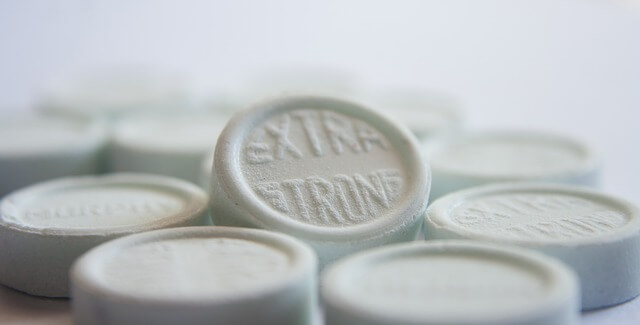The delicate balance between patent protection and drug affordability has become a critical issue. As we delve into this complex topic, we’ll explore the intricate relationship between innovation, intellectual property rights, and the pressing need for accessible healthcare. Join us on this journey as we unravel the challenges and potential solutions in the ongoing debate of balancing patents and drug prices.
The Patent Paradox: Protecting Innovation vs. Ensuring Affordability
Patents play a crucial role in the pharmaceutical industry, serving as a powerful incentive for companies to invest in research and development (R&D). But here’s the catch: while patents protect innovation, they can also lead to higher drug prices. It’s a classic case of “damned if you do, damned if you don’t.”
The Purpose of Pharmaceutical Patents
Let’s start with the basics. Patents grant pharmaceutical companies exclusive rights to manufacture and sell their newly developed drugs for a specific period, typically 20 years from the filing date. This exclusivity allows companies to recoup their substantial R&D investments and potentially turn a profit.
But why are patents so important in the pharmaceutical world? Well, imagine spending billions of dollars and countless hours developing a groundbreaking medication, only to have competitors swoop in and copy your formula as soon as it hits the market. Not exactly a recipe for innovation, is it?
The High Cost of Drug Development
Developing a new drug is no walk in the park. It’s a long, arduous, and incredibly expensive process. On average, it takes about 10 to 15 years and costs a whopping $2.6 billion to bring a new drug to market. That’s billion with a “B,” folks!
“The process of drug discovery is so complex and challenging that for every 5,000 to 10,000 compounds that enter the drug discovery pipeline, only one will actually make it through to become an approved drug.” – Dr. Francis Collins, Former Director of the National Institutes of Health
With such high stakes, it’s no wonder pharmaceutical companies fiercely protect their patents. But this protection comes at a cost – literally.
The Impact on Drug Prices
Here’s where things get tricky. Patent protection allows pharmaceutical companies to set high prices for their drugs without fear of competition. This exclusivity period is meant to help companies recoup their R&D costs and incentivize future innovation. However, it can also lead to sky-high drug prices that put essential medications out of reach for many patients.
The Global Perspective: Patents and Access to Medicines
Now, let’s zoom out and look at the bigger picture. The impact of pharmaceutical patents isn’t limited to developed countries – it has far-reaching consequences on a global scale.
Developing Countries and Patent Laws
In many developing countries, the high cost of patented drugs can be a matter of life and death. Limited healthcare budgets and lower income levels mean that expensive medications are often inaccessible to those who need them most.
International Trade Agreements and Patent Protection
International trade agreements, such as the Agreement on Trade-Related Aspects of Intellectual Property Rights (TRIPS), have set global standards for patent protection. While these agreements aim to promote innovation and fair trade, they’ve also been criticized for potentially limiting access to affordable medicines in developing countries.
The Generic Drug Dilemma: A Double-Edged Sword
Generic drugs are often hailed as the solution to high drug prices. But like most things in life, it’s not that simple.
The Role of Generic Drugs in Reducing Prices
Once a drug’s patent expires, generic versions can enter the market. These generics are typically much cheaper than their brand-name counterparts, often leading to significant price drops. In fact, generic drugs saved the U.S. healthcare system $313 billion in 2019 alone.
Challenges Faced by Generic Manufacturers
However, generic drug manufacturers face their own set of challenges. They must navigate complex patent landscapes, deal with potential patent extensions, and sometimes face legal battles with brand-name companies. These hurdles can delay the entry of generic drugs into the market, prolonging high prices for consumers.
Patent Evergreening: Extending Monopolies
Ever heard of patent evergreening? It’s a strategy used by some pharmaceutical companies to extend their patent protection beyond the initial 20-year period.
Common Evergreening Strategies
Companies might make small modifications to their drugs, such as changing the dosage form or combining it with another medication, and then file new patents on these “improvements.” This practice can effectively extend the period of market exclusivity, keeping prices high for longer.
The Debate Over Incremental Innovation
Supporters argue that these modifications can lead to genuine improvements in patient care. Critics, however, contend that many of these changes are minor and don’t justify extended patent protection at the expense of affordability.
Government Interventions: Striking a Balance
Governments worldwide are grappling with the challenge of balancing innovation incentives with the need for affordable medicines.
Price Controls and Negotiations
Some countries have implemented price controls or engage in direct negotiations with pharmaceutical companies to keep drug prices in check. For instance, the United Kingdom’s National Health Service (NHS) negotiates prices directly with drug manufacturers, often resulting in lower prices compared to the United States.
Compulsory Licensing
In extreme cases, governments may issue compulsory licenses, allowing generic production of patented drugs without the patent holder’s consent. This approach has been used in some developing countries to increase access to essential medicines, particularly for HIV/AIDS treatments.
The Role of Public Funding in Drug Development
Here’s a plot twist for you: a significant portion of drug development is actually funded by public money. Surprised? You’re not alone.
Government-Funded Research
Many groundbreaking discoveries that lead to new drugs originate in publicly funded academic institutions or government laboratories. For example, the technology behind mRNA vaccines, which played a crucial role in the COVID-19 pandemic response, was developed with substantial public funding.
The Debate Over “Paying Twice”
This public involvement in drug development has led to debates about whether taxpayers are essentially “paying twice” for medications – once through research funding and again through high drug prices. Some argue that drugs developed with public funds should be subject to stricter pricing regulations.
Alternative Models for Drug Development
As the debate over patents and drug prices continues, researchers and policymakers are exploring alternative models that could potentially strike a better balance between innovation and affordability.
Prize Funds and Open Source Drug Discovery
One proposed alternative is the use of prize funds to reward successful drug development, rather than relying solely on patent-based incentives. This approach could potentially delink the cost of R&D from the price of the final product.
Public-Private Partnerships
Collaborations between public institutions, private companies, and non-profit organizations are becoming increasingly common in drug development. These partnerships can help share the risks and costs of R&D while potentially leading to more affordable end products.
The Impact of Biosimilars on the Patent Landscape
As biotechnology advances, a new player has entered the field: biosimilars. These are highly similar versions of complex biologic drugs, and they’re shaking up the traditional patent vs. generic dynamic.
Challenges in Developing Biosimilars
Unlike traditional generic drugs, biosimilars are not exact copies of the original biologic. This complexity means that developing and approving biosimilars is more challenging and expensive than producing generic small-molecule drugs.
Regulatory Frameworks for Biosimilars
Regulatory agencies worldwide are still adapting to the unique challenges posed by biosimilars. The balance between encouraging competition and ensuring patient safety is delicate, and regulations continue to evolve.
The Role of Artificial Intelligence in Drug Discovery
Artificial Intelligence (AI) is revolutionizing many industries, and drug discovery is no exception. But how does this technological advancement fit into the patent and pricing puzzle?
AI-Driven Drug Discovery
AI has the potential to significantly speed up the drug discovery process and reduce R&D costs. Some estimates suggest that AI could cut drug discovery times by up to 50% and reduce costs by as much as 70%.
Patenting AI-Generated Inventions
As AI plays an increasingly significant role in drug discovery, new questions arise about patenting AI-generated inventions. This emerging field of patent law could have profound implications for the future of pharmaceutical innovation and pricing.
The COVID-19 Pandemic: A Case Study in Patents and Access
The global COVID-19 pandemic has brought the issues of drug patents and accessibility into sharp focus, providing a real-world case study of the challenges and potential solutions.
Vaccine Development and Distribution
The rapid development of COVID-19 vaccines was a triumph of scientific innovation, made possible in part by substantial public funding and unprecedented global collaboration. However, the uneven global distribution of vaccines highlighted ongoing issues of access and affordability.
Patent Waivers and Technology Transfer
The pandemic sparked debates about patent waivers for COVID-19 vaccines and treatments. In May 2021, the U.S. announced support for waiving intellectual property protections for COVID-19 vaccines, a move that was both praised for potentially increasing global access and criticized for potentially discouraging future innovation.
The Future of Drug Pricing and Patent Protection
As we look to the future, it’s clear that the relationship between patents and drug prices will continue to evolve. But what might this future look like?
Value-Based Pricing Models
Some experts propose moving towards value-based pricing models, where drug prices are tied to their demonstrated effectiveness and impact on patient outcomes. This approach could potentially align incentives for innovation with the need for affordability.
International Cooperation and Harmonization
Greater international cooperation in drug development and patent harmonization could potentially lead to more efficient R&D processes and improved global access to medicines.
Key Takeaways
- Patents play a crucial role in incentivizing pharmaceutical innovation but can lead to high drug prices.
- The high cost of drug development (average $2.6 billion) justifies patent protection but raises affordability concerns.
- Generic drugs and biosimilars offer potential for price reduction but face regulatory and legal challenges.
- Government interventions like price controls and compulsory licensing aim to balance innovation and accessibility.
- Public funding plays a significant role in drug development, leading to debates about fair pricing.
- Alternative models like prize funds and public-private partnerships are being explored to address patent-pricing issues.
- The COVID-19 pandemic highlighted both the strengths and weaknesses of the current system.
- Future solutions may involve value-based pricing and increased international cooperation.
FAQs
- Q: How long do pharmaceutical patents typically last?
A: Pharmaceutical patents generally last for 20 years from the filing date. However, the effective patent life is often shorter due to the time required for clinical trials and regulatory approval. - Q: What is a compulsory license in pharmaceutical patents?
A: A compulsory license is a government-granted license that allows a company to produce a patented product without the consent of the patent owner, usually in cases of national emergency or to address public health crises. - Q: How do biosimilars differ from generic drugs?
A: Biosimilars are highly similar versions of complex biologic drugs, while generic drugs are exact copies of small-molecule drugs. Biosimilars are more complex to develop and regulate than traditional generics. - Q: What is patent evergreening?
A: Patent evergreening refers to strategies used by pharmaceutical companies to extend their patent protection beyond the initial period, often by making minor modifications to existing drugs and filing new patents. - Q: How might AI impact pharmaceutical patents and drug prices in the future?
A: AI has the potential to significantly reduce drug discovery times and costs, which could lead to more affordable medications. However, it also raises new questions about patenting AI-generated inventions, which could impact future drug pricing and innovation incentives.
References:
: https://www.wipo.int/patents/en/
: https://www.phrma.org/resource-center/Topics/Research-and-Development/Biopharmaceutical-Research-Development-The-Process-Behind-New-Medicines
: https://www.wto.org/english/tratop_e/trips_e/trips_e.htm
: https://accessiblemeds.org/sites/default/files/2020-09/AAM-2020-Generic-Biosimilar-Access-Savings-Report-US-Web.pdf
: https://www.gov.uk/government/publications/voluntary-scheme-for-branded-medicines-pricing-and-access
: https://www.scientificamerican.com/article/for-billion-dollar-covid-vaccines-basic-government-funded-science-laid-the-groundwork/
: https://www.ncbi.nlm.nih.gov/pmc/articles/PMC7577280/
: https://ustr.gov/about-us/policy-offices/press-office/press-releases/2021/may/statement-ambassador-katherine-tai-covid-19-trips-waiver






















